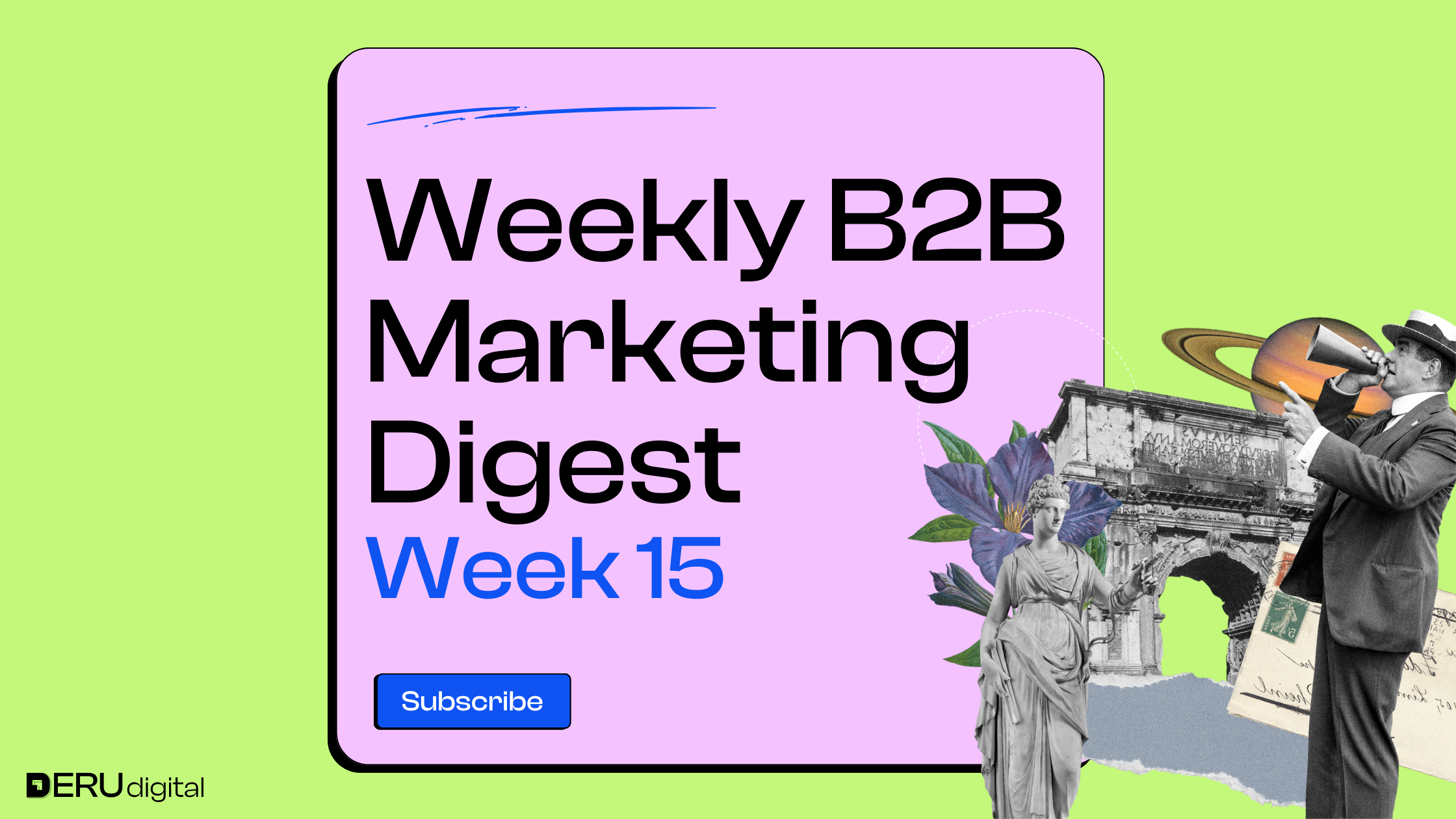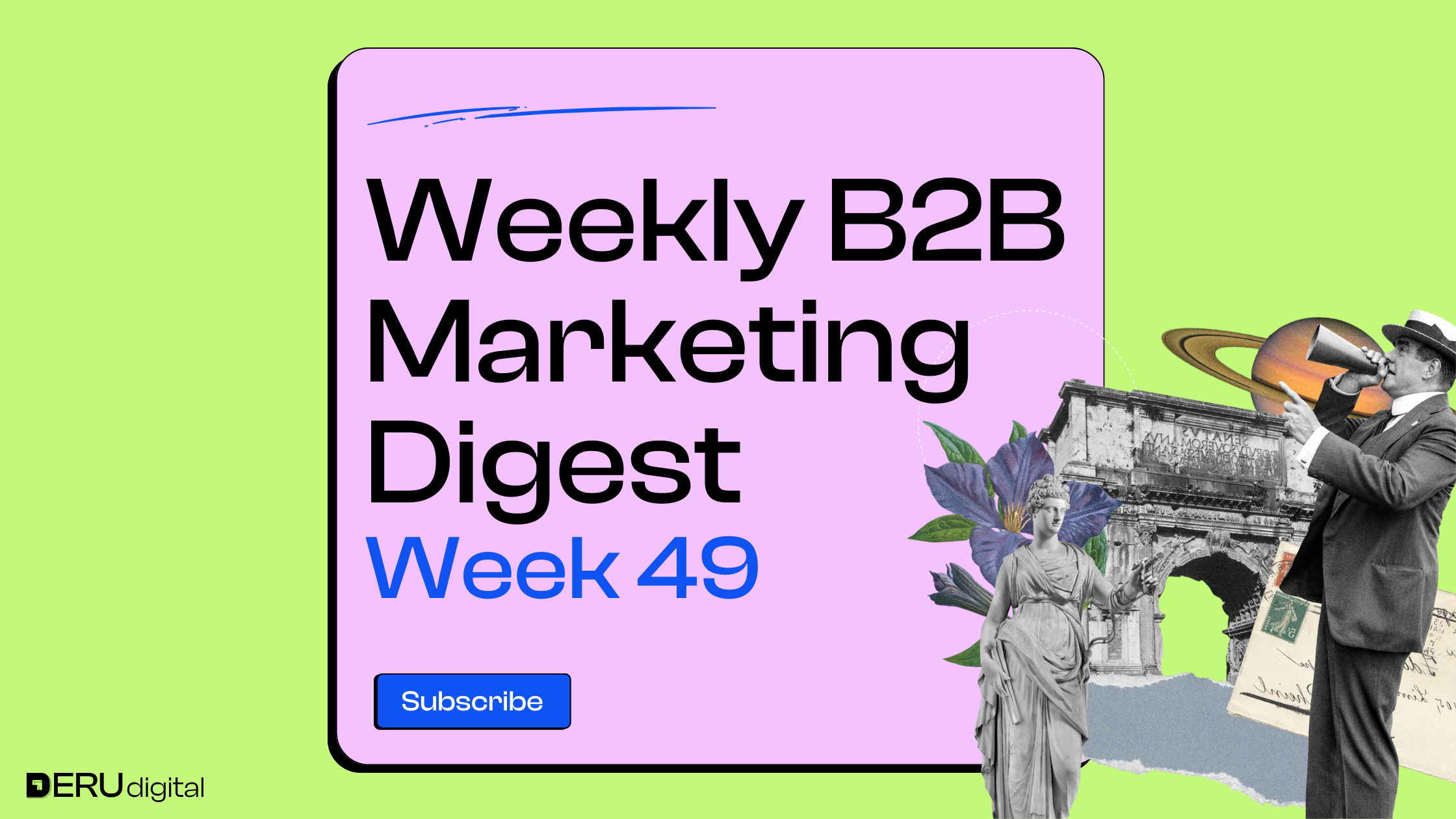INSIGHTS FROM EXPERTS ON LINKEDIN
Ryan Olestro shares that LinkedIn is testing a feature that lets you mix formats like images and video in one campaign. It could mean fewer campaigns, less budget splitting, and a simpler setup overall. He compares it to Facebook’s approach and rates it a 7 out of 10.
Aleksandar Radosevic explains how he turned loose product thoughts into strong homepage copy using a simple, repeatable framework. It helps teams cut the buzzwords and write real messaging that connects across emails, sites, and pitches. His approach focuses on clarity, structure, and what actually matters to customers.

Mats Georgson, Ph.D. says it’s not about picking the right channel – it’s about knowing your market, refining your product, and making your brand clear and memorable. Once that’s in place, creative and distribution can actually work. Tactics matter, but only after the fundamentals are solid.
Steve Patti calls out the ongoing confusion in SaaS marketing between brand building and demand generation. He explains that brand marketing creates long-term preference through storytelling, while demand gen drives pipeline through product offers and conversions. The two have different goals, tactics, and measurements – and can’t be treated as the same thing.
Kirill Vdov breaks down why ad competition and costs spike after Q1 – mainly due to catch-up spend and goal pressure before summer slowdowns. He advises against pausing campaigns completely, suggesting instead to lower bids and pace budgets based on seasonality. Smart timing now can help you avoid overpaying for the same results.

Clark Barron argues that many Marketing Ops roles are mislabeled RevOps jobs used to save costs and bury marketers in reactive tasks. Instead of strategy and storytelling, these teams end up fixing CRMs and pulling reports. He calls for a reset – hiring real analysts, putting RevOps in its place, and letting marketers actually market again.
Nazarii Stefanyshyn highlights Meta’s new feature that lets advertisers cap ad frequency for Sales campaigns – not just Reach. This update helps avoid creative fatigue, which often kills performance after repeated views. Though limited to certain campaign types, it’s a big step toward smarter budget use and better testing results.

Niclas Prenker debunks the myth that LinkedIn is dead during summer – audience size may dip, but engagement and lead quality go up. With fewer advertisers active, it’s a prime time to gain Share of Voice and lower your ad costs. If you stay visible, you’ll outpace competitors prepping for Q3.
Xan Mannekens shares a simple system for verifying over 100 ICP matches weekly – without the manual grind or pricey tools. By combining Fibbler, OpenAI, Google Sheets, and Make, you can instantly vet accounts and optimize your ad targeting. He offers a free Notion template for those who want to try it.
Tom Wanek lays out seven unfiltered truths about brand growth – from the power of broad reach to the importance of emotional ads and long-term thinking. He urges marketers to stop chasing quick wins and instead build brands people remember. Growth isn’t easy, but staying consistent and visible makes all the difference.
WHAT'S NEW IN THE INDUSTRY
Most B2B buying decisions start in the mind, not in a search bar – and that’s where Category Entry Points (CEPs) come in. This article breaks down how CEPs help brands become top-of-mind in specific buying situations, increasing both customer acquisition and retention. It offers a practical guide to identifying, prioritizing, and measuring CEPs to create more effective brand messaging.

With TikTok facing a possible U.S. ban, advertisers are pulling back and redirecting ad spend toward Meta platforms like Facebook and Instagram. TikTok CPMs dropped significantly in Q1 as major brands reduced budgets, despite the platform still projected to earn nearly $15B in U.S. ad revenue this year. Meta is benefitting from the uncertainty, seeing rising CPMs on short-form video formats.
Many brands are unknowingly driving up their own costs by bidding on branded search terms without any real competition. This “uncontested paid search problem” can waste significant budget, inflating CPCs unnecessarily. A new webinar from BrandPilot AI explains how to detect and fix the issue to optimize ad spend.
Google’s Performance Max campaigns now offer retention goals for lapsed customers, better acquisition cost tracking, and new image enhancements. Advertisers can now bid more strategically across the customer lifecycle and use landing page images or smart cropping to improve ad variety. These updates give marketers more control and insight without sacrificing automation.
Canva’s Visual Suite 2.0 combines design, planning, data, and AI tools in one platform to simplify marketing workflows. New features include Canva Sheets, AI-generated charts, integrated campaign planning, and even no-code widgets through Canva Code. It’s designed to help teams collaborate, move faster, and turn ideas into on-brand assets without jumping between tools.

HubSpot is rolling out powerful new tools for large marketing teams in the SMB space, including AI-powered Lookalike Lists, journey automation, and multi-account management. The upgrades aim to reduce busywork, adapt to complex customer paths, and keep growing businesses from outgrowing the platform. HubSpot is betting that speed, scale, and smarter AI will be key to retaining upmarket users.
That’s the scoop for this week! If you found this valuable and any useful insights caught your eye, feel free to share them with your network.
Until next week!



